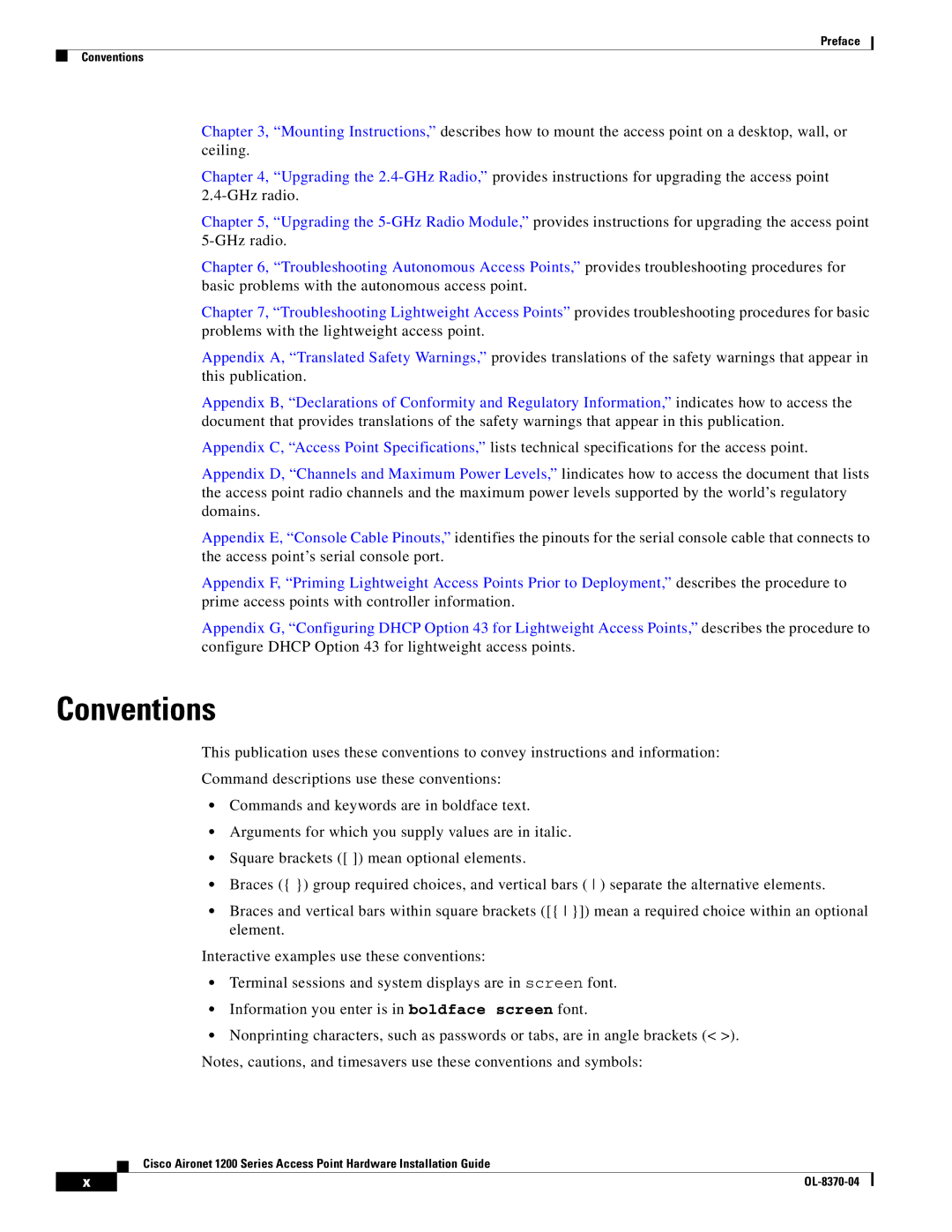
Preface
Conventions
Chapter 3, “Mounting Instructions,” describes how to mount the access point on a desktop, wall, or ceiling.
Chapter 4, “Upgrading the
Chapter 5, “Upgrading the
Chapter 6, “Troubleshooting Autonomous Access Points,” provides troubleshooting procedures for basic problems with the autonomous access point.
Chapter 7, “Troubleshooting Lightweight Access Points” provides troubleshooting procedures for basic problems with the lightweight access point.
Appendix A, “Translated Safety Warnings,” provides translations of the safety warnings that appear in this publication.
Appendix B, “Declarations of Conformity and Regulatory Information,” indicates how to access the document that provides translations of the safety warnings that appear in this publication.
Appendix C, “Access Point Specifications,” lists technical specifications for the access point.
Appendix D, “Channels and Maximum Power Levels,” lindicates how to access the document that lists the access point radio channels and the maximum power levels supported by the world’s regulatory domains.
Appendix E, “Console Cable Pinouts,” identifies the pinouts for the serial console cable that connects to the access point’s serial console port.
Appendix F, “Priming Lightweight Access Points Prior to Deployment,” describes the procedure to prime access points with controller information.
Appendix G, “Configuring DHCP Option 43 for Lightweight Access Points,” describes the procedure to configure DHCP Option 43 for lightweight access points.
Conventions
This publication uses these conventions to convey instructions and information:
Command descriptions use these conventions:
•Commands and keywords are in boldface text.
•Arguments for which you supply values are in italic.
•Square brackets ([ ]) mean optional elements.
•Braces ({ }) group required choices, and vertical bars ( ) separate the alternative elements.
•Braces and vertical bars within square brackets ([{ }]) mean a required choice within an optional element.
Interactive examples use these conventions:
•Terminal sessions and system displays are in screen font.
•Information you enter is in boldface screen font.
•Nonprinting characters, such as passwords or tabs, are in angle brackets (< >). Notes, cautions, and timesavers use these conventions and symbols:
Cisco Aironet 1200 Series Access Point Hardware Installation Guide
| x |
| |
|
|
